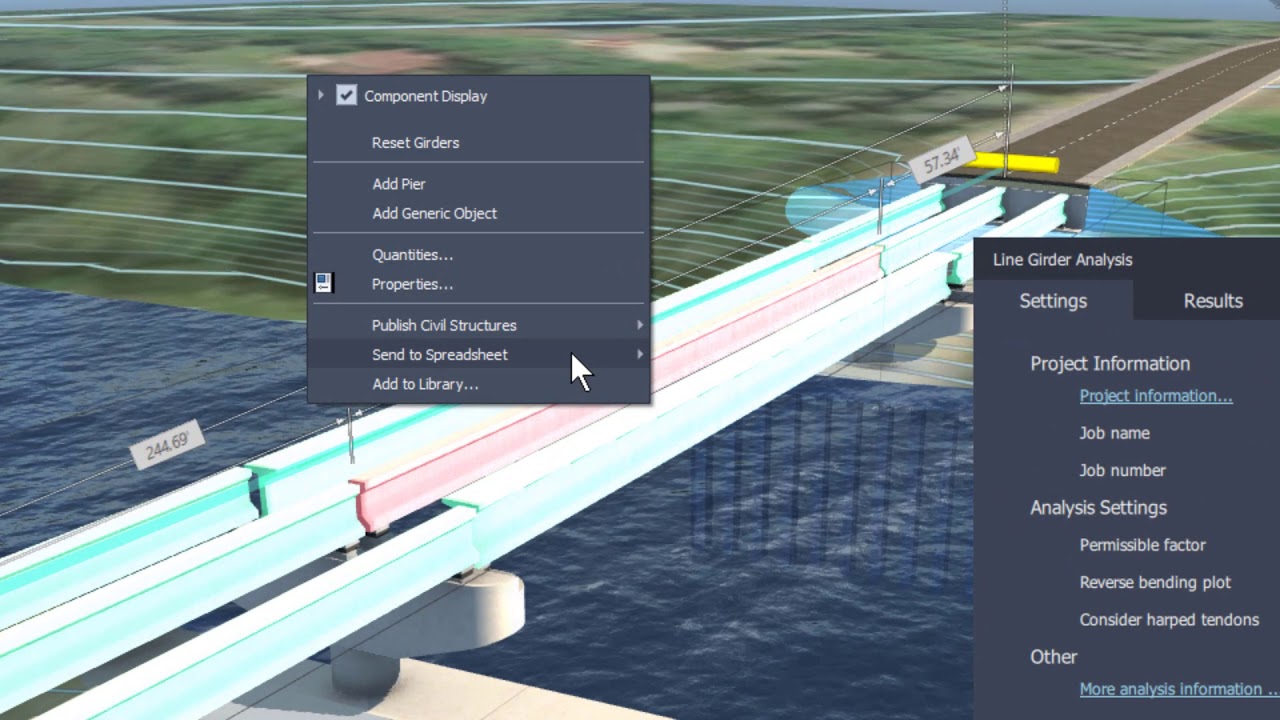
Introduction: Bridges and culverts are vital components of any infrastructure project, playing a crucial role in facilitating transportation and managing water flow. In the digital age, designing these structures demands advanced tools that not only streamline the process but also ensure accuracy and efficiency. Autodesk InfraWorks emerges as a powerhouse solution, empowering engineers and designers to craft bridges and culverts with precision and innovation. This comprehensive guide aims to delve deep into the art and science of designing bridges and culverts in InfraWorks, offering step-by-step insights and expert tips to master this essential aspect of infrastructure development.
Understanding InfraWorks: Before diving into bridge and culvert design, it’s crucial to grasp the fundamentals of InfraWorks. Developed by Autodesk, InfraWorks is a powerful Building Information Modeling (BIM) software specifically tailored for infrastructure design and engineering. It allows users to create 3D models of various infrastructure elements, simulate real-world conditions, and analyze different scenarios, making it an indispensable tool for modern infrastructure projects.
Key Features of InfraWorks: InfraWorks boasts a plethora of features tailored to streamline the design process and enhance collaboration among project stakeholders. Some key features include:
- 3D Modeling: InfraWorks enables users to create detailed 3D models of bridges, culverts, roads, and other infrastructure elements, providing a realistic visualization of the project.
- Geospatial Analysis: The software integrates geospatial data, allowing engineers to analyze terrain, water flow, and environmental factors to make informed design decisions.
- Simulation and Visualization: InfraWorks offers powerful simulation tools that simulate various scenarios, such as traffic flow, water runoff, and structural behavior, aiding in design optimization.
- Collaboration: InfraWorks facilitates collaboration among multidisciplinary teams by enabling cloud-based sharing of models and real-time project updates.
Designing Bridges in InfraWorks: Designing bridges in InfraWorks involves a systematic process that encompasses conceptualization, analysis, and detailing. Here’s a step-by-step guide to designing bridges in InfraWorks:
- Preliminary Design:
- Define the project scope, including the type of bridge (e.g., beam, arch, suspension) and its functional requirements.
- Use InfraWorks’ intuitive modeling tools to create a preliminary 3D model of the bridge, considering factors such as span length, clearance height, and alignment with roadways.
- Conduct a preliminary analysis to assess the feasibility of the design and identify potential constraints or challenges.
- Structural Analysis:
- Utilize InfraWorks’ built-in analysis tools to perform structural analysis on the bridge model, evaluating factors such as load distribution, stability, and deflection.
- Incorporate real-world data, such as traffic loads and environmental conditions, into the analysis to ensure the structural integrity and safety of the bridge.
- Detailing and Documentation:
- Refine the bridge design based on the results of the structural analysis, making necessary adjustments to enhance performance and efficiency.
- Add detailed components such as railings, abutments, and piers to the bridge model using InfraWorks’ extensive library of parametric objects.
- Generate comprehensive documentation, including drawings, specifications, and reports, to communicate the design intent to stakeholders and regulatory authorities.
Designing Culverts in InfraWorks: Culverts play a critical role in managing water flow beneath roadways, railways, and other transportation infrastructure. Designing culverts in InfraWorks follows a similar process to bridge design, with a focus on hydraulic analysis and drainage considerations. Here’s how to design culverts in InfraWorks:
- Hydraulic Analysis:
- Begin by defining the hydraulic parameters of the culvert, such as flow rate, velocity, and capacity requirements.
- Use InfraWorks’ hydrology and hydraulic analysis tools to simulate the flow of water through the culvert, accounting for factors such as slope, channel geometry, and inlet/outlet conditions.
- Evaluate the performance of the culvert under various flow scenarios, ensuring that it can effectively convey water without causing flooding or erosion.
- Culvert Design:
- Based on the results of the hydraulic analysis, select an appropriate culvert type and size that meets the project requirements and hydraulic capacity.
- Integrate the culvert into the overall infrastructure model, ensuring proper alignment and connection with adjacent elements such as roadways and drainage channels.
- Add necessary components such as headwalls, wing walls, and aprons to the culvert model, considering factors such as erosion protection and sedimentation control.
- Documentation and Approval:
- Generate detailed documentation, including hydraulic calculations, cross-sections, and plan views, to support the culvert design and obtain regulatory approvals.
- Collaborate with environmental agencies and regulatory authorities to ensure compliance with environmental regulations and permitting requirements.
- Review and revise the culvert design as needed based on feedback from stakeholders and regulatory agencies, ensuring that it meets all applicable standards and specifications.
Best Practices for Bridge and Culvert Design in InfraWorks: In addition to following the step-by-step design process outlined above, here are some best practices to optimize the design of bridges and culverts in InfraWorks:
- Utilize Realistic Terrain Models: Incorporate accurate terrain data into your InfraWorks model to ensure that the bridge or culvert design is compatible with the surrounding topography and environmental conditions.
- Leverage Parametric Components: Take advantage of InfraWorks’ extensive library of parametric components to streamline the design process and maintain consistency across multiple projects.
- Collaborate with Stakeholders: Engage with stakeholders early and often throughout the design process to gather feedback, address concerns, and ensure alignment with project goals and objectives.
- Optimize for Performance and Sustainability: Strive to design bridges and culverts that not only meet functional requirements but also minimize environmental impact, enhance resilience, and promote long-term sustainability.
- Stay Updated with Latest Features: Regularly explore new features and updates in InfraWorks to leverage the latest advancements in technology and improve the efficiency and effectiveness of your bridge and culvert designs.
Conclusion: Designing bridges and culverts in InfraWorks is a multifaceted process that requires careful planning, analysis, and collaboration. By following the step-by-step guidelines outlined in this comprehensive guide and adopting best practices for design optimization, engineers and designers can leverage the full potential of InfraWorks to create innovative and resilient infrastructure solutions that meet the needs of communities and contribute to sustainable development.